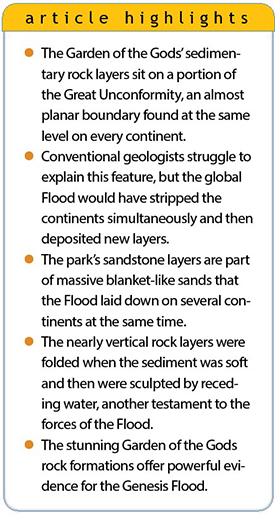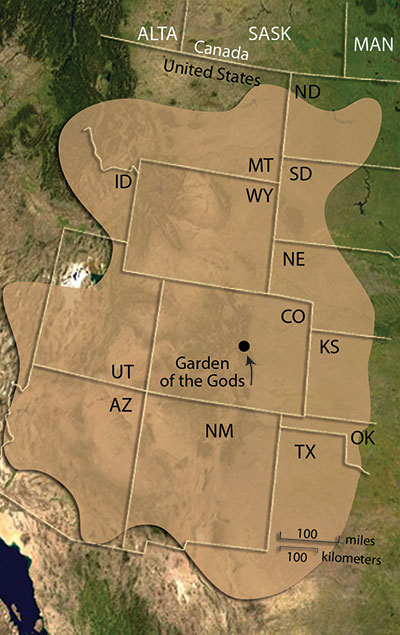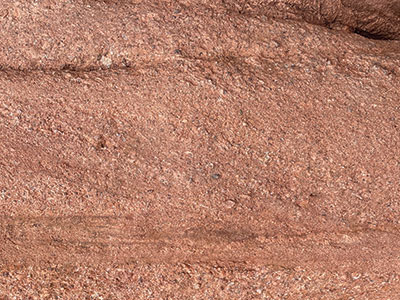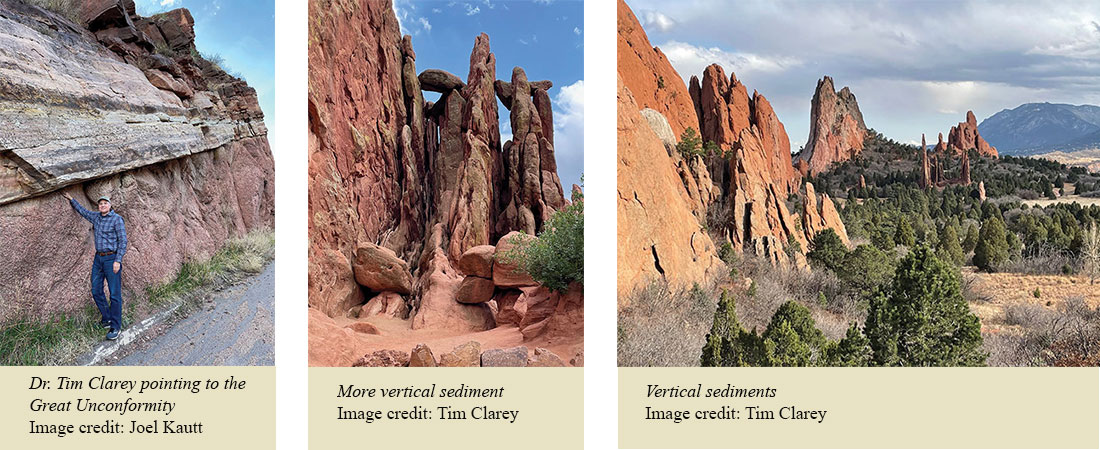 One of the most breathtaking sites along the Colorado Front Range is located within the city limits of Colorado Springs. Here, multiple sheets of orange and white sandstones shoot right out of the ground in front of the dramatic backdrop of Pikes Peak. Known as Garden of the Gods, this park was named by two surveyors in 1859 who considered it “fit for the gods to assemble.”1 Evidently they didn’t take into account the one true God who created everything through Jesus Christ (John 1:3).
One of the most breathtaking sites along the Colorado Front Range is located within the city limits of Colorado Springs. Here, multiple sheets of orange and white sandstones shoot right out of the ground in front of the dramatic backdrop of Pikes Peak. Known as Garden of the Gods, this park was named by two surveyors in 1859 who considered it “fit for the gods to assemble.”1 Evidently they didn’t take into account the one true God who created everything through Jesus Christ (John 1:3).
A bill was introduced in Congress in 1886 to make Garden of the Gods, Pikes Peak, and nearby land a national park, but it didn’t pass.1 The park was subsequently listed as a National Natural Landmark instead. Today, the park is owned and maintained by the City of Colorado Springs. Consisting of 1,367 acres (over two square miles), the park is visited by about four million people annually, coming from every state.1
Although no sign in the park mentions the global Flood, three observations demonstrate that Garden of the Gods was a product of it.
Great Unconformity Exposed
Just south of the park and west of the town of Manitou Springs is an exposure of the Great Unconformity, a global erosional surface. Here we see the Flood’s lowermost sandstones resting on a nearly planar erosional surface (the unconformity). This boundary marks a major gap in the conventional geologic record between Precambrian rocks below and younger sedimentary rocks above. Below this surface is the pink Pikes Peak granite, which is possibly from the creation week.
The worldwide extent of this erosional surface baffles uniformitarian scientists. Why is this near-planar boundary found at the same level on every continent? This question remains one of the great mysteries of evolutionary geology.2
The worldwide Flood is the best explanation for the global nature of the Great Unconformity. To make this extensive erosional surface, a significant portion of the Precambrian surface material and some of the pre- Flood sedimentary rocks must have been stripped off a majority of the world’s continents simultaneously. This was followed by the immediate deposition of the overlying sands.3 The erosion may have been caused by torrential rains that occurred in the first 40 days of the Flood and/or by the erosive action of tsunami-like waves propagating across parts of the continents.
The global Flood left its undeniable mark on all the continents. A universal erosional surface immediately covered by fossil-filled sedimentary strata adds up to strong evidence for the Flood that destroyed every land-dwelling creature except for those preserved with Noah on the Ark. This evidence is clearly visible to those who haven’t closed their eyes to the truth of God’s Word.

sands map, modified from Whitmore5
Blanket Deposits on Continental Scale
The second observation that points to the Flood is the extent of the sandstone layers found at Garden of the Gods. The orange-colored rocks are the Permian Lyons Sandstone, a layer deposited near the onset of the Absaroka Megasequence about 40 to 50 days into the Flood.3 It runs from Colorado Springs to the Wyoming border, a distance of 150 miles.4
But these rocks extend even farther. Flood geologist John Whitmore found that this sandstone layer, commonly about a few hundred feet thick, extends nearly from Canada to Mexico and from the western edge of Utah to western Kansas!5 The Lyons Sandstone in Colorado is equivalent to the Coconino Sandstone in Grand Canyon.5 That means water deposited the whole sand blanket at the same time.
These same sandy layers have been correlated to other units deposited at the same position during the Flood on several other continents, including Europe and South America, as well as the Middle East.5
Most of these sands are composed of extremely pure quartz that contains almost no shale. Uniformitarian geologists still struggle to explain the sands’ global presence and have failed to develop a satisfactory answer.6

The Flood offers a great explanation for these thin, uniform sandstones that were deposited at the same time across multiple continents. Even the cross-bedded layers7 within these sands show a similar flow direction (southward), which supports a common origin for the entire unit.5 In addition, measurements of the cross-bed angles reveal about a 20° average for their dip angle (measured from the bedding surface).5 A significant percentage of desert dunes are always steeper than 25° whereas the vast majority of underwater sand dune cross-bed angles hover around 20°. The dunes in this massive blanket of sand show only rare cross-beds steeper than 25°, if at all.5
These data match water deposits and not desert sand dunes as evolutionary geologists assert. This evidence is clear. These sands were part of a massive blanket of sand rapidly deposited during the global Flood.
Folded While Still Soft
The third observation that points to the Flood is that the sedimentary rocks at Garden of the Gods are nearly vertical. Undeformed sedimentary rocks are usually horizontal. It took great forces to fold these sediments 90°.
According to the evolutionary story, the rocks at Garden of the Gods were deposited and turned to stone about 300 million years ago, and their folding to near vertical supposedly took place about 50 million years ago. If this were true, the rock layers would have merely shattered and not folded at all since hardened rocks are very brittle.
Recently, studies were completed on similar folded sandstones in Grand Canyon that were also claimed to be hundreds of millions of years old. These folded rocks were determined to have been still damp and soft at the time of folding.8 They folded like wet clay.
The best explanation for the folding of the sandstone layers at Garden of the Gods is that they were likewise still wet and soft. This means very little time had elapsed between the blanket sand’s deposition and its tilting. In other words, these folds should instantly erase about 250 million years from evolutionary thinking. And the needed folding forces were supplied when thickened crust over a complex subduction zone thrust the Rocky Mountains upward near the end of the Flood.9


Monument to the Flood
The Flood provides the most reasonable explanation for the rocks at Garden of the Gods. Their deposition was part of the flooding of the North American continent, possibly during the first 40 to 50 days of the Flood year.3 A massive marine flow spread the sand from north to south. Then a few months later, as the floodwaters began to recede, the uplift of the Rocky Mountains folded the still-soft wet sands to near vertical. Finally, the waning stages of the receding phase eroded away much of the sandstone, leaving dramatic sculptures.
Garden of the Gods is a reminder of the watery judgment of the earth by the one righteous God who created everything and offers us salvation through Christ.
References
- Colorado Springs Parks and Recreation Department. 1994. Garden of the Gods Master Plan.
- Clarey, T. Still Trying to Explain the Great Unconformity. Creation Science Update. Posted on ICR.org May 11, 2020, accessed June 16, 2023.
- Clarey, T. 2020. Carved in Stone: Geological Evidence of the Worldwide Flood. Dallas, TX: Institute for Creation Research.
- Ross, M. R. et al. 2010. Garden of the Gods at Colorado Springs: Paleozoic and Mesozoic Sedimentation and Tectonics. In Through the Generations: Geologic and Anthropogenic Field Excursions in the Rocky Mountains from Modern to Ancient. Geological Society of America Field Guide 18. L. A. Morgan and S. L. Quane, eds. Boulder, CO: Geological Society of America.
- Whitmore, J. R. 2019. Lithostratigraphic Correlation of the Coconino Sandstone and a Global Survey of Permian “Eolian” Sandstones: Implications for Flood Geology. Answers Research Journal. 12: 275-328.
- Runkel, A. C. et al. 2007. High-resolution Sequence Stratigraphy of Lower Paleozoic Sheet Sandstones in Central North America: The Role of Special Conditions of Cratonic Interiors in Development of Stratal Architecture. Geological Society of America Bulletin. 119 (7-8): 860-881.
- Cross-beds are sedimentary structures that are inclined at an angle to the bedding planes. They represent the sand that falls down the advancing steep or leeward slope of a water ripple or dune. They can be used to determine the direction of the current during deposition.
- Snelling, A. A. 2023. The Carbon Canyon Fold, Eastern Grand Canyon, Arizona. Answers Research Journal. 16: 1-124.
- Clarey, T. Mountains Rise When Subduction Ceases. Creation Science Update. Posted on ICR.org March 26, 2020.
Stage Image: Garden of the God and Pikes Peak, Image Credit: Tim Clarey
* Dr. Clarey is Director of Research at the Institute for Creation Research and earned his Ph.D. in geology from Western Michigan University.





















